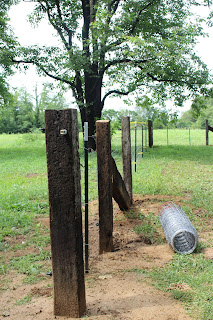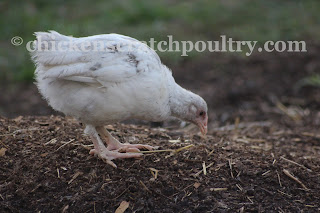Back in February we began hatching out chicks fast and furious so that we would have pullets ready to go early spring. We're still working through a few orders, those folks with Ameraucans, Olive Eggers or Blue Laced Red Wyandottes on your orders, we haven't forgotten you :) Seems we can never hatch those breeds fast enough.
So if your looking for a started young hen, one that is ready to go into the coop, we have a few of those ready now. Take a minute to scan down through the photos below as I introduce each one them to you.
Light Sussex, pictured above in the photo. They make the greatest addition to any flock, I can't say it enough, I love this breed. They're curious, friendly and good on the egg production. Not to mention they're great eye candy for the yard. I was told by a poultry judge up north that our line of Light Sussex is the closest to perfection that he has seen, he purchased four of my hens to improve on his own flock, I think that speaks volumes for my line of Sussex.
Black Orpingtons ready to go that are almost 3 months old, they're big girls! If you like fat bottoms on your birds, you'll love these gals! Orpingtons are a bit like lap dogs, they're in your face friendly, super sweet girls. Don't pass this breed up simply because it's a boring color, there really is nothing boring about them, they're all personality!!
I have little Maline pullets ready to go, this is a new breed to the farm, we've had them one year now and what a nice addition they've made. They're a large bird but the hens really aren't much bigger than the Black Orpington hens, It's the Maline roosters that are huge but very gentle.
Maline hens are super inquisitive when I come into their pen to gather the eggs. They go right along with me, looking through the boxes, as if to say "whatcha looking for?"
They lay very nice large to Jumbo sized eggs, actually they lay the largest egg on the farm. I must say I love these girls!!
Coronation Sussex, yes I actually have some pullets that I can share with you finally! I love this sweet, fat, bumbly bird. I find it humorous watching them run with wings spread out and head down as if they could ever get their rumps a foot off the ground. These big girls need a low roost... You'll never find another bird quite like the Coronation Sussex, they're decked out in the purest of pearl white feathers but under those pearly feathers is down like a goose. They're built for the cold and do some of their best egg production during the cooler months.
This bird was long ago produced for the King's table, one look at them now and you'll know why.
Splash Marans pullets, they will lay a nice dark Mahogany colored egg. They have a much sweeter disposition than the Black Copper Marans. They color out nicely with spots of blue as they mature. Give your flock and your egg basket a Splash of color.
Ayam Cemani, I find their beauty difficult to describe...but beauties they are! They are shy in a very sweet kind of way but with just a small amount of attention they will begin to trust you and steal your heart those coal black eyes. The hens are petite and lay a nice large egg for their size that is almost white in color, closest thing to a white egg that we have on the farm.
Chocolate Opringtons, who can resist a bird shaped like a volley ball with a feather duster tail? If you need a bird that doesn't take up a lot of room in the coop this is a breed to consider. If you need a bird that's good with children, quiet bird for the neighborhood and all around easy bird to work with, the Chocolate Oprington should be at the top of your wish list.
Welsummers, pretty golden hens that lay beautiful dark brown spotted eggs. Our Welsummer are pretty amazing in that they will lay an egg that is as dark as our French Black Copper Marans eggs. I bet there aren't too many breeders out there that can claim that. This is no hatchery bird. We've had our line of Welsummers for over 10 years now and have never introduced a new breeding line into the flock. They are perfect so why change it...
Last but not least...French Black Copper Marans. We've also had our Marans line for over 10 years now. We get an awesome mahogany colored egg from them. They range form a 4 to a 7 on the Marans egg color chart and occasionally an 8. If your looking for a dark egg layer, look no further.
A man came to our farm this week to pickup his order of pullets, he told me that he order a couple of hatchery Marans last year and ordered one marans from our farm and raised them up together. He said that our Marans line grew 1/3 larger than the hatchery bird. Those kind of stories make my heart swell with pride. All the hard work that we put into them is worth it when the customer notices a difference.
All these breeds that I just listed are available now in started young pullets. We're also still hatching and shipping out day old chicks if your interested in those. Your welcome to call and place an order over the phone 618-643-5602 or head over to the
Website and drop me an email. We look forward to hearing from you.
Birds of a Feather Flock Together!
Angie






















































